
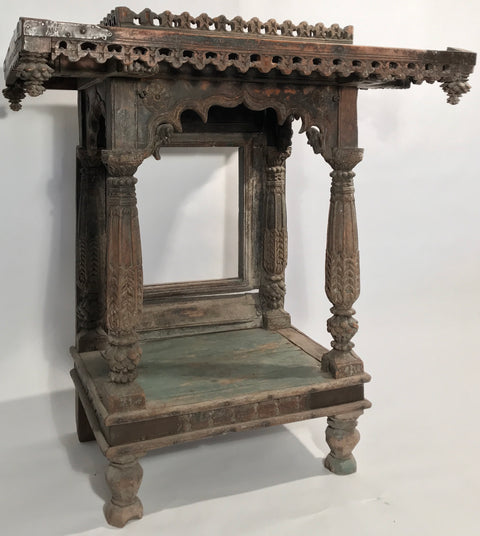



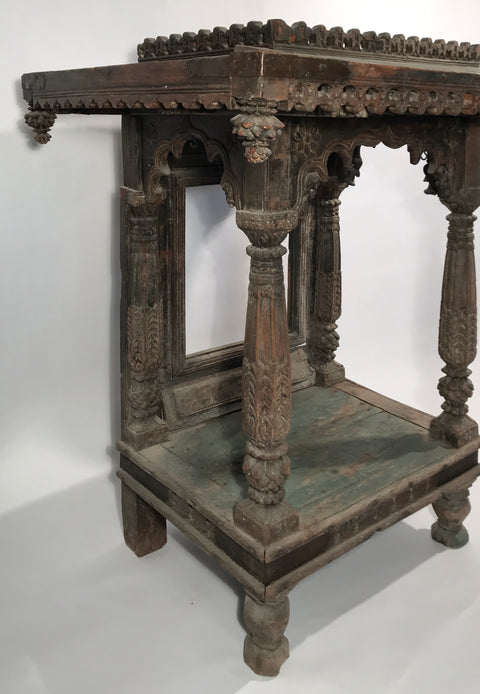
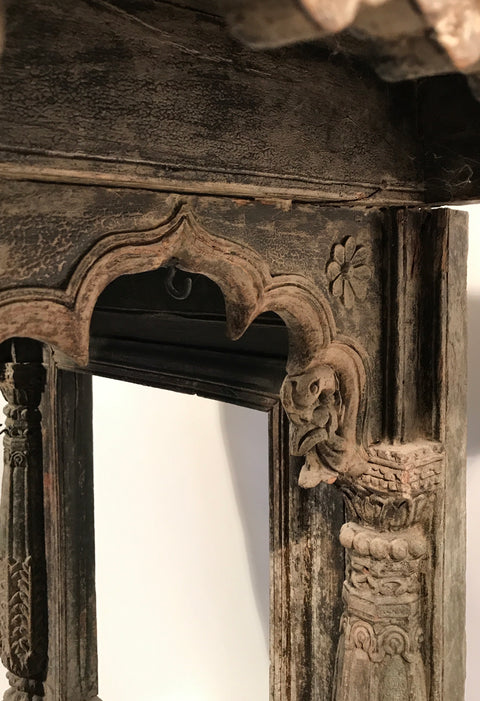
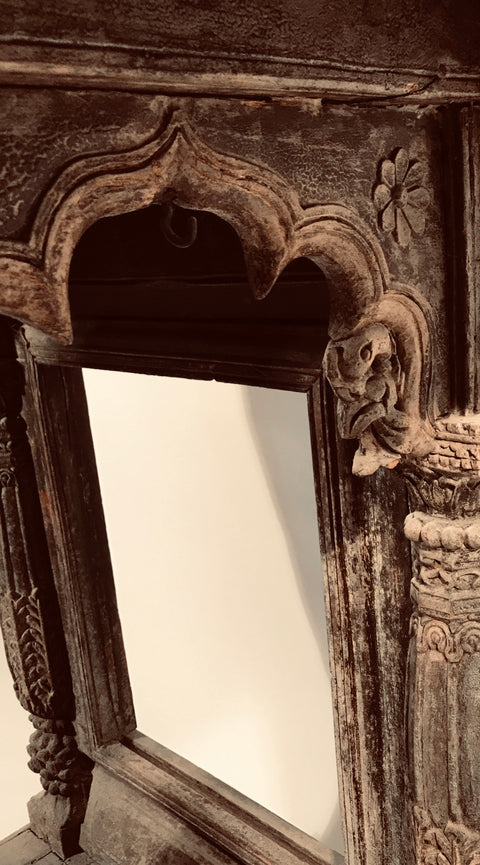
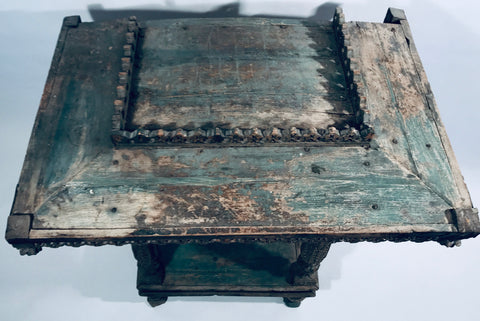
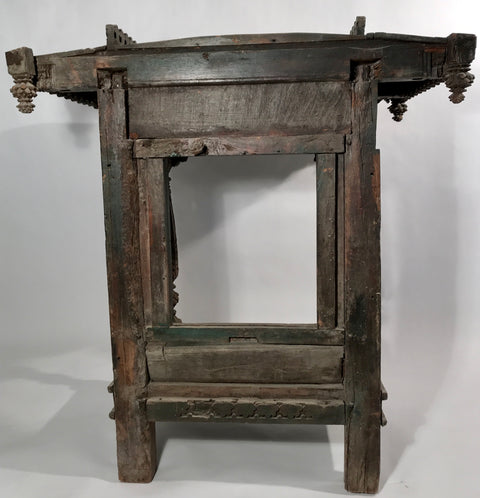

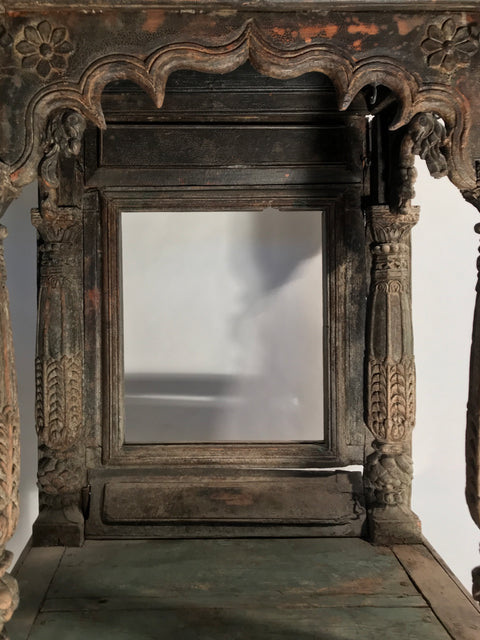
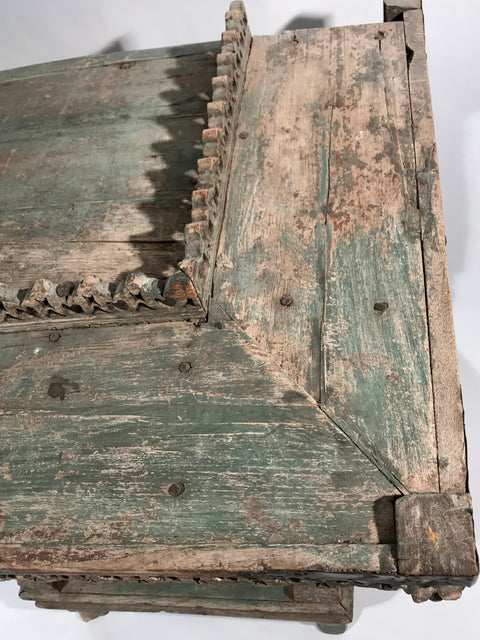
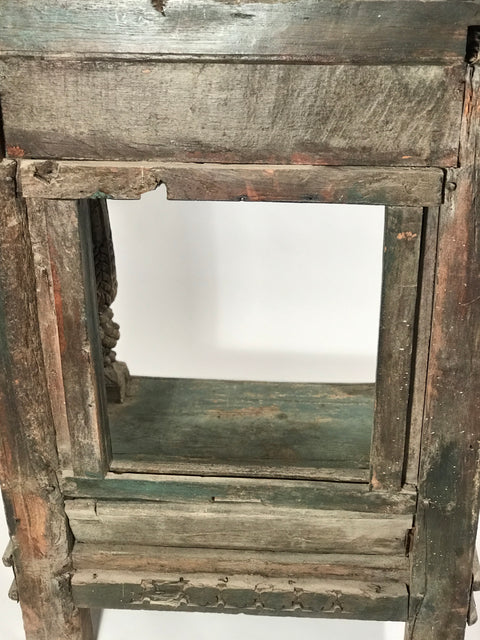

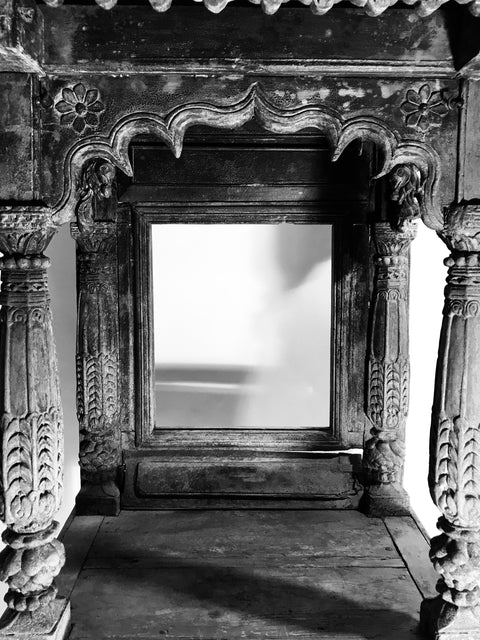
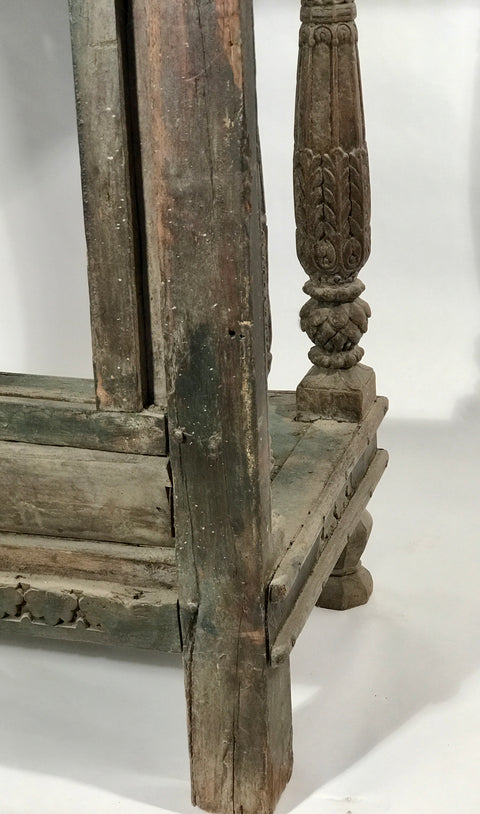
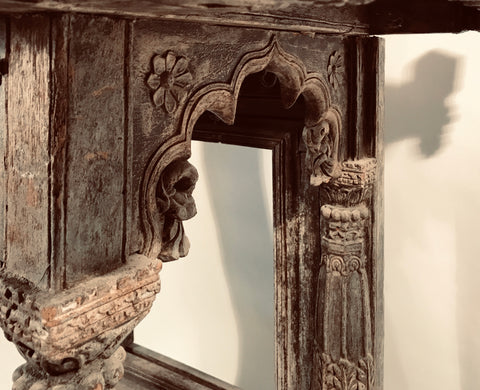
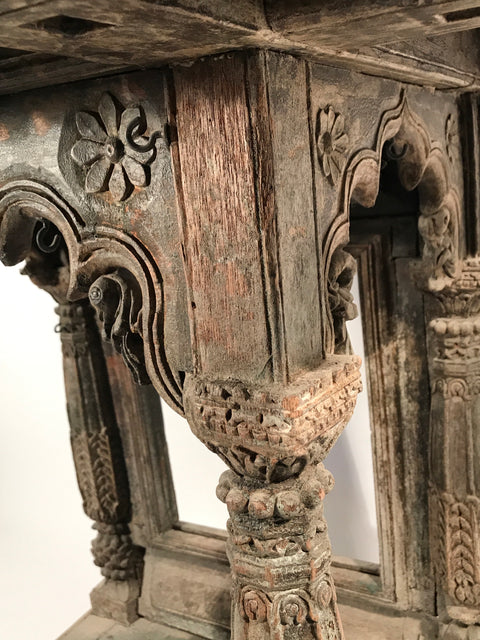
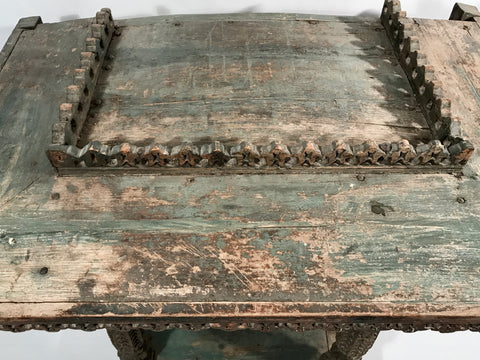

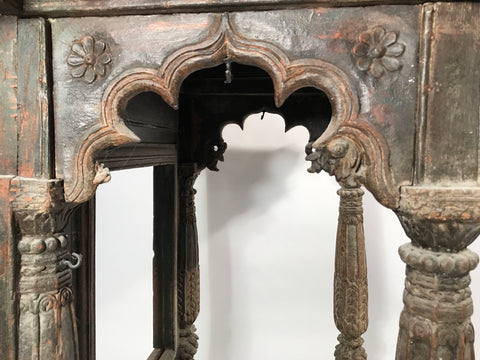
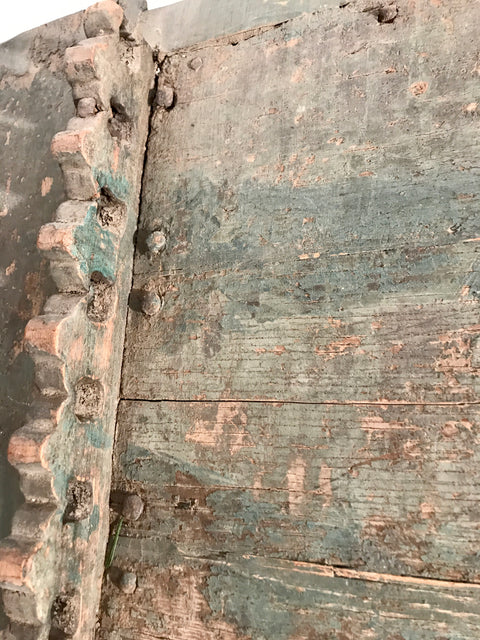
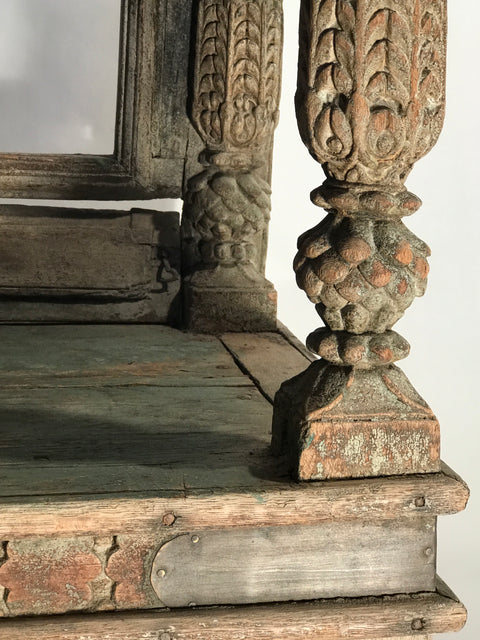
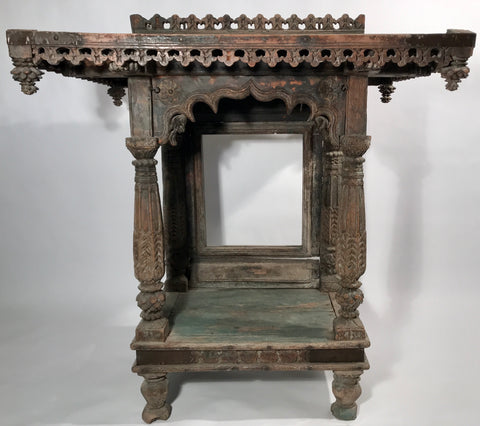
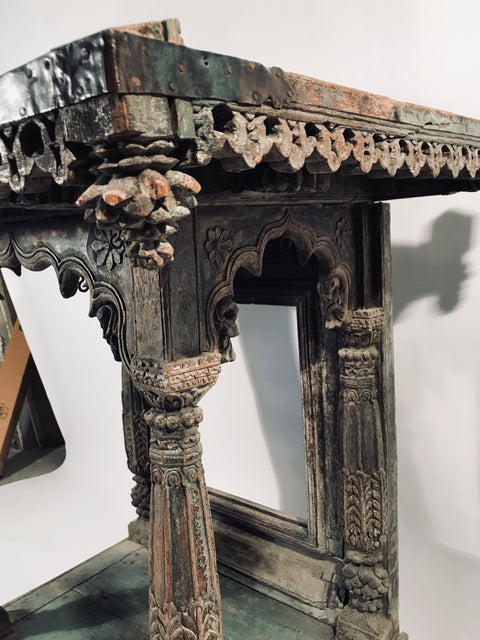

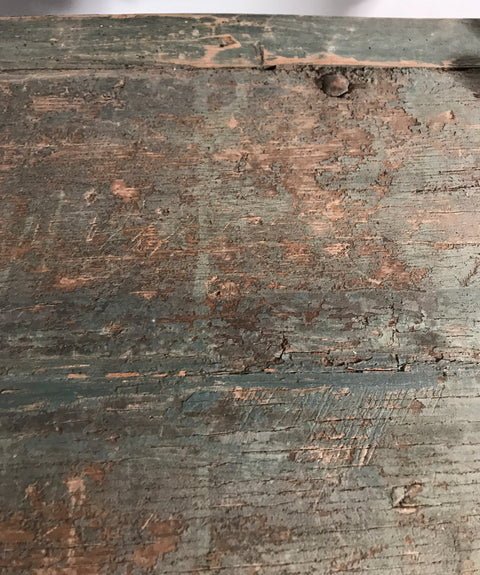
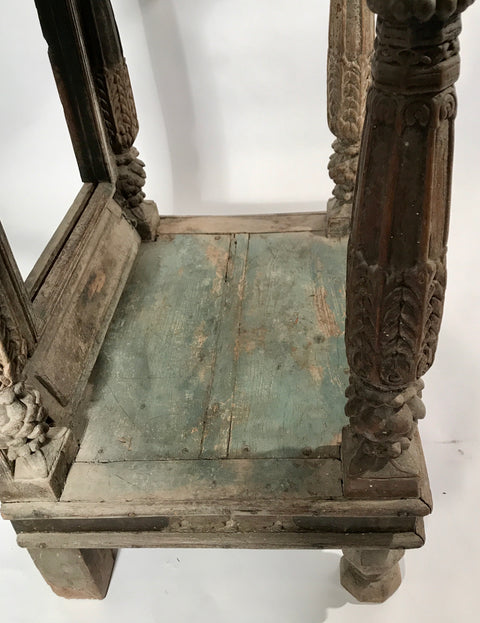
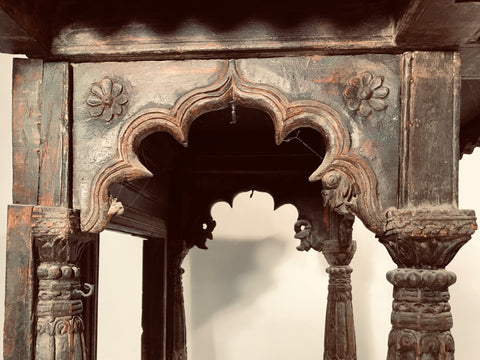
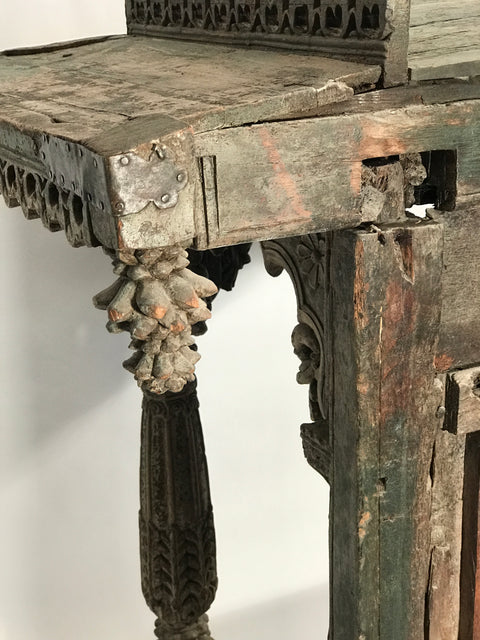
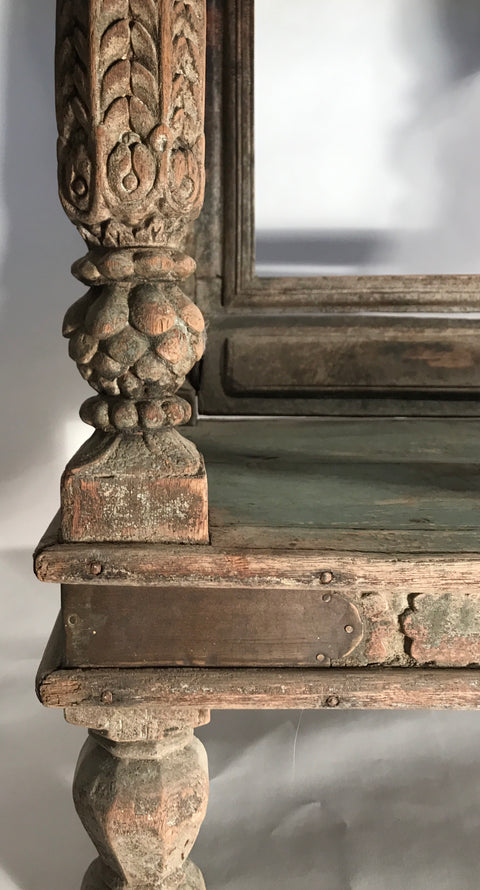
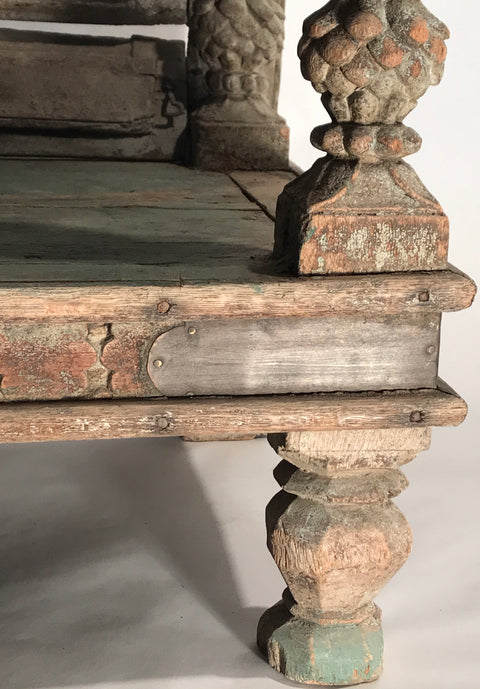
A Wood carved Jain Shrine from India 17th Century
A 17th Century Jain wood house temple from India
Dimensions : width 93 cm Width 65 cm High 67 cm
This wood carved Jain shrine is typical of Indian art. A wealthy individual from northwest India probably commissioned this small shrine for private, devotional practice. The details of the shrine are reminiscent of the architecture of the larger Jain temples from this region and here have been translated into miniature.
Four posts stand atop a plinth, or base and support a roof, establishing a sort of portico or entrance to the shrine separating the sacred space from the mundane.
The richly decorated surface of the posts covered with floral motifs. double doors are missing.
Behind the doors originally resided a figure of a savior called a tirthankara, one of twenty-four Jain deities. Perhaps it could even have housed a figure of Mahavira, the 6th century founder of Jainism
A house temple (Ghar Derasar or Griha Chaityalaya) is a private Jain shrine that is placed within a personal residence. Sometimes it is separate room or structure in a compound.
Jain scholars prescribe that the height of a pratima in a house shrine should not exceed 11 aṅgulas, i.e. about 21 cm.
The formal communal temple is often referred to as a shikharbandi Jinalaya, i.e. with a shikhara. Sometimes a temple starts as a house temple, which grows into a formal shikharbandi Jinalaya when the community grows to be sufficiently large.
Jain author Haribhadra Suri states in one of his famous grantha Sambodh prakran that-
If a lay person has savings more than 100 rupees, then there must be a Ghar derasar at his/her home. Further he says that the house which does not have a Ghar derasar is not a home, it is a graveyard.
Jainism is an ancient religion from India. Followers are called Jains, and they practice non-violent behaviors to work toward individual perfection. Their ultimate goal is liberation from rebirth. A liberated individual who serves as an exemplar is known as a Jina (victor) also called a Tirthankara (one who fords the waters). Jain practice requires daily veneration of an image of a Jina, either at a community temple or at a home shrine. This shrine is an example of the elaborate ghar derasars (house temples) commonly commissioned by wealthy Jains for private use.
https://en.wikipedia.org/wiki/Jain_house_temple